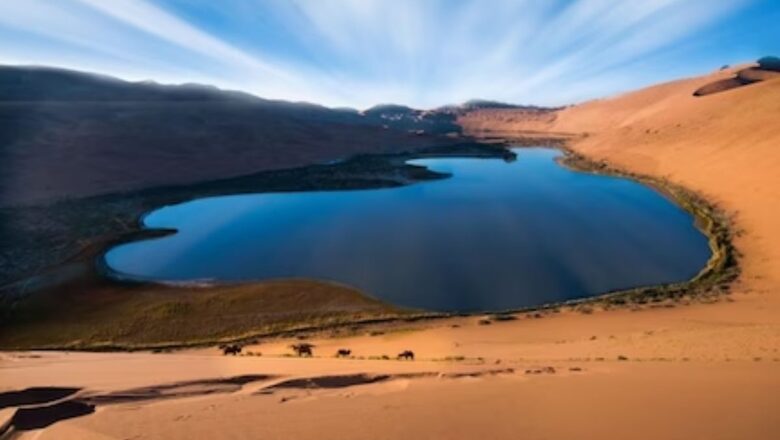
views
The Badain Jaran Desert is not an optical illusion-like mirage but rather a unique geographical phenomenon that has captivated visitors for many years. Situated close to Alashan Youqi in Western Inner Mongolia Autonomous Prefecture, about or over 100 lakes are nestled among enormous sand dunes known as Megadunes, some of the largest globally. Against the backdrop of swirling sand spires, observers witness a striking juxtaposition of grazing sheep and swooping birds around saline waters, reflecting the yellow-brown hues of the surrounding sand. According to numerous researchers, the lake water in the Badain Jaran Desert is believed to originate from groundwater stored beneath the sands. They argue that this groundwater accumulates in specific areas, forming springs that supply freshwater to deeper lakes. Despite the groundwater presence, most lakes exhibit high salinity, with approximately 50% classified as salt lakes. Alternatively, some researchers attribute the water source to factors like precipitation and snow melt, especially considering the region’s harsh winters in the Inner Mongolia Autonomous Prefecture. Ongoing research aims to confirm the water source and explore evaporation rates, and in certain instances, the disappearance of lakes.
While many lakes in the area contain salt, some are freshwater and exhibit various colours due to minerals, algae, and salty shrimp. Notable lakes include Badain, Nortu, and Yinderitu. Additionally, the desert features clear springs with drinkable water.
Discover the planet’s largest singing sand dune, Baori Taolegai, situated on the desert’s fringe, towering over 200 metres. When descending its slopes, the sand creates a distinctive sound. Among the sandy peaks in the region, Bilutu Peak, known as the Mount Everest of the desert, stands out at 1617 metres above sea level, with sand abundant in grindstones. Haisenchulu is a vast area spanning over 40 square kilometres, renowned for its peculiarly shaped stones. Photographers from around the world flock to this location to capture the unique formations on camera.
The desert’s natural wonders are truly miraculous. It might astonish you to learn that within the desert’s remote expanse lies Badain Jaran Temple, a Tibetan Buddhist temple constructed in 1755 AD during Emperor Qianlong’s reign in the Qing Dynasty.




















Comments
0 comment